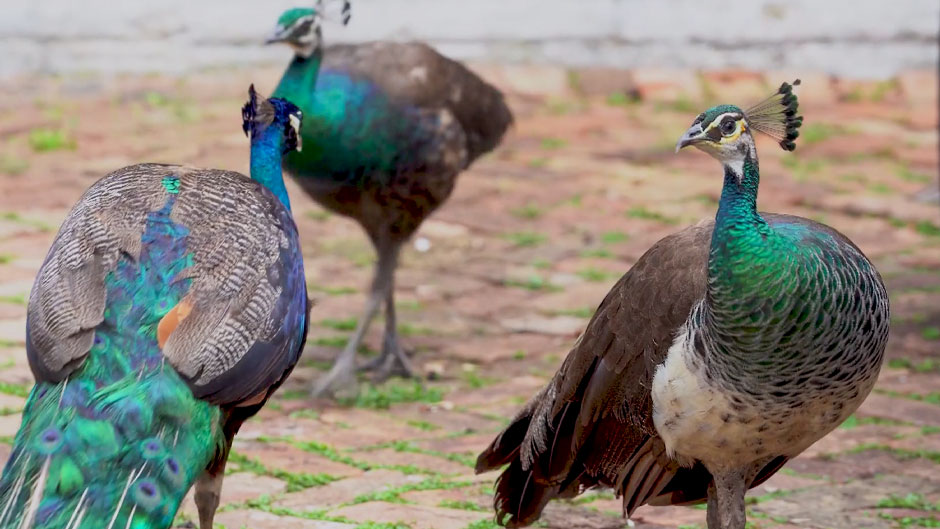Some call it the "peafowl predicament." It is the increasing presence of peafowls, or wandering peacocks and peahens, in the Coconut Grove neighborhood.
For years, the colorful birds have strutted the streets of the neighborhood as if they owned them. No one knows how they arrived there, since they are not indigenous to the area.
Some residents love the colorful peafowl, whose multicolored plumage provide an exotic ambience. Other residents hate them because they are loud, they poop often and everywhere, and in many cases have damaged cars and landscapes.
Now the controversy has come to the screen in an almost 10-minute video created by a trio of University of Miami School of Communication faculty members: Edward Julbe, senior lecturer; Gina Presson, lecturer; and Ben Ezzy, adjunct professor and graduate student.
The video—“Peafowl Predicament: Friend or ‘Foul’?”—can be found on the UMTV website. Presson, who has extensive experience as a television reporter, producer, and anchor, serves as the reporter.
“The film is about how some people love them and others hate them and how the city is trying to figure out what to do,” said Presson. The idea of documenting the peafowl controversy came to Julbe when the City of Miami in February 2020 decided to pass legislation to safely remove the fowls.
“Because of their beauty most people want them around,” said Julbe. “If it looked like a vulture, no one would want them around. It is a nice-looking bird until they scratch up your car, and then they are not so good looking anymore because they just destroyed a paint job.”
The trio spent many hours interviewing Coconut Grove residents. One resident, Cathy Moghari, is dubbed the “Peacock Lady” because she feeds the birds twice a day. And in order to get footage of the first feeding, the film crew had to arrive on the premises at 6 a.m.
“That early, the peacocks were still roosting in the trees and at that time they have a different sound than during the day,” said Presson.
That sound is what irritates many residents who are often awakened by the peafowl squawks. Other residents showed the filmmakers their damaged cars, where the birds often peck the cars and throw themselves against them.
No one really knows the exact number of the pheasants that live in Coconut Grove, but the filmmakers interviewed several researchers from Florida International University who partnered with the City of Miami to count the peafowl. They estimate that the number is between 650 to 1,500.
City of Miami Commissioner Ken Russell is also featured in the video. He spearheaded the legislation to trap the wildlife—following a similar one in Rancho Palos Verdes, California—after hearing from many residents whose property was damaged by the peafowl.
The legislation allows professional trappers to catch the pheasants and transfer them to a wild refuge preserve. The cost is $1,000 per trap and it must be covered by the Coconut Grove residents since the City of Miami lacks the budget to fund this, said Russell. So far, no traps have been set.
While the neighborhood and the city still search for a solution to the problem, Julbe will submit the film to several academic competitions, including to the Broadcast Education Association. Presson is also trying to get PBS interested in running the film.

